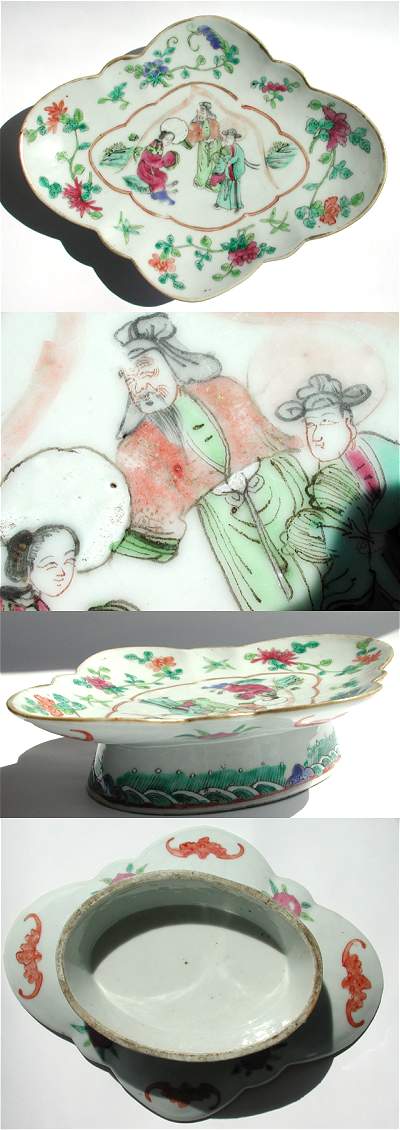
This page is only one of many thousands of Gotheborg.com Help and Information Pages, offering specialized knowledge on Chinese and Japanese Porcelain, including a Glossary, Q&A, Chinese and Japanese Porcelain Marks, Chinese Porcelain Exhibition and Excavation reports etc. For personal help and far more information, join our Discussion Board or use 'Ask a Question' for quick email consultations. For full text and better navigation, use a full-screen device rather than a mobile phone, that offers only limited content.

Not long ago I bought a small serving tray (23cm width and 5.5cm height). The decoration looks like a wedding ceremony, with a priest holding a "disc" behind the heads of the couple. This idea is endorsed by the underside of the rim on which are painted four bats and four prunes, Fu and Shou, longevity and hapiness.
Here my knowledge stops. Is it a wedding present? In what time to date the tray (famille rose?) Where does it come from (Chinese or Japanese?)
The quality of the piece is very good not taking into account a few pinholes in the glaze. The surface has some wear and tear. The expression on the faces are very subtle.
I hope the pictures do better than words.
The piece in itself is a Chinese food serving dish. Chinese meals are always made up of several dishes - fish, meat, pork, poultry, vegetables etc, each of which are served on individual dished, like these. Dishes of this shape generally called "fruit trays" though.
The decoration could be said to be "famille rose" but I feel that term should be reserved for the 18th century pieces that term originally was intended for. The correct term here might instead rather be the modern Chinese name for "old style enamels applied within outlines" i.e. fencai.
Simlar pieces have been excavated in North America, close to where Chinese immigrants settled by the mid to late 19th century, which is also the most likely date for this piece.
The specific decorative features of this pieces which you mention are interesting but I would hesitate to read into them that any specific purpose was intended for this piece.
The "prunes" you are mentioning is not really visibly on the pictures but would normally actually be peaches, still with the exact meaning you are indicating i.e. longevity.
Sincerely,
Jan-Erik Nilsson